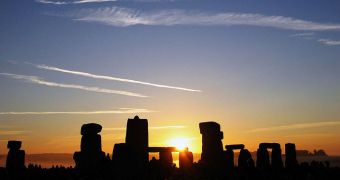As you all know, 2009 was the International Year of Astronomy (IYA). The year is unfortunately coming to a close, but numerous discoveries were made during the past 12 months, and, more importantly, a lot of new cooperations started, or continued. Under the pretense of the IYA, many research groups joined efforts for space observations, a fact that was clearly made visible by the outstanding results recorded. Now, with just two weeks of 2009 left, astronomers and archaeologists are getting ready to celebrate more 5,000 years of astronomy, AlphaGalileo reports.
Scientists will gather at the amazing megalithic monument that is Stonehenge, in the UK, to celebrate the advancements made in this field over the millennia. From a basic understanding of the world around us, to the first classifications of stars and planets, to various views on our place in the Universe, and finally to the deeper understanding of skies that we have today, all has taken place over a long time. The fitting grand finale for the IYA will include a number of attractions, including expert-led tours of the Neolithic monument, and free public astronomy exhibitions.
Stonehenge was chosen for its mysterious history and undecipherable purpose. The first signs of activity of what has been called the first European observatory date back more than 3,000 years ago, but the monument itself was constructed in small increments, lasting for more than one and a half millennia. Due to its rich history and significance, organizers believe that this location is more than suited for the IYA 2009 festivities, which will last from December 16, 2009 to January 3, 2010, save for December 25-26, 2009.
Its stones are famous for aligning with the rising Sun at the summer solstice, and with the place where the star sets during the winter solstice. They are also connected to the Moon, in the years when the celestial body's orbital tilt brings it to extreme northern and southern positions in the sky. All these correlations have been observed through numerous observations of possible alignments, conducted from within the monument itself at various occasions over the years.

 14 DAY TRIAL //
14 DAY TRIAL //